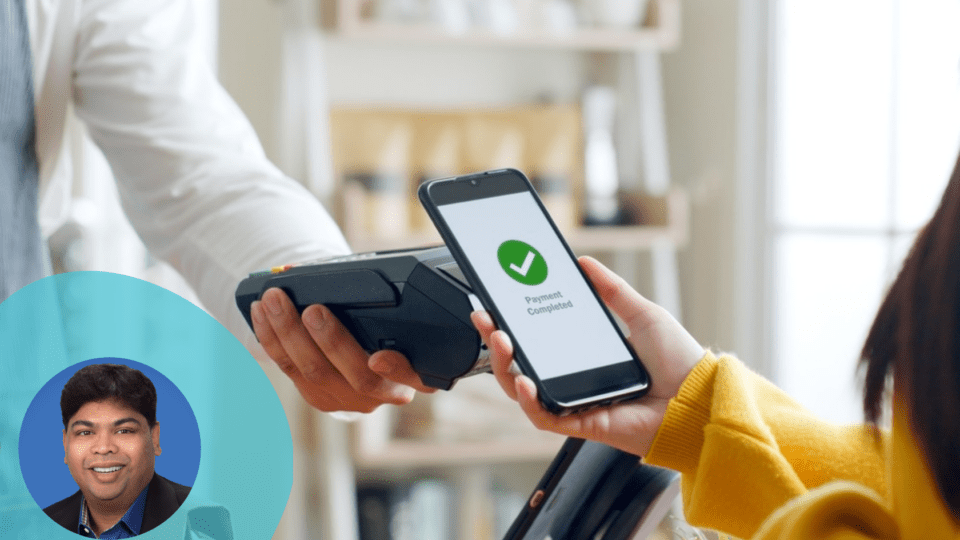In-person payments have undergone a transformation over the years. Initially, merchants used manual imprinters to take an imprint of a credit card, providing proof that the card was present at the time of sale. Then, the magnetic stripe reader was introduced, enabling the satisfying feeling of a credit card swipe. The EMV chip came next, but this payment method is already being overtaken by contactless payments, with its market growing more than 20% per year.
As more consumers adopt contactless as their preferred payment method, it’s become crucial for merchants to understand what it means for their security, customers and the future. For merchants that have only recently started accepting contactless — or for those that have been using it since its inception but still have questions on how it works — here are five things about contactless that you may not know:
- How they really work.
Contactless payments are carried out with near-field communication (NFC) technology, which allows NFC-equipped devices to exchange data when they are placed within close proximity of each other. While NFC technology is standard on modern smartphones, it can easily be installed on credit card chips, smart watches and other devices.
To pay, the customer simply places their device within a couple inches of the merchant’s NFC-enabled checkout terminal. Apple Pay, Google Pay and Samsung Pay are the most commonly-used contactless payment platforms in the U.S., and at this point most credit card issuers offer contactless cards. - They are as secure as the EMV chip.
While contactless payments may provoke concerns about security, they are actually about as secure a form of payment as you can get. They use the same encryption and tokenization principles as the EMV chip, which has reduced certain types of card-present fraud by 87% since its introduction.
When a customer initiates a transaction, the data that gets sent over NFC does not contain any of their actual payment information, only an encrypted token that is useless in any other context. Contactless payment apps also require consumers to actively initiate a transaction — fraudsters can’t use wireless devices to “trigger” unauthorized payments — and usually require multi-factor authentication as well, making it very difficult for fraudsters to take over their accounts.
The biggest security risk is the theft of a contactless credit card. Until the card gets reported, a thief may be able to use it to make small purchases under the CVM limit. As long as the merchant follows the proper transaction procedures, the issuer will be liable for charges like these when the cardholder disputes them. - They are faster and lower-friction than other payment methods.
In brick-and-mortar stores, checkout speed doesn’t just affect the customer making the purchase, but everyone waiting in line behind them. Contactless payments are faster and lower-friction than transactions that involve physical cards and direct interaction with the merchant terminal. In fact, contactless payments take about 10 to 15 seconds to complete — twice as fast as EMV chip card transactions. - Consumers prefer them.
Most consumers today have found that they prefer contactless payments over other payment methods. A recent survey found that 57% of consumers are more likely to shop at stores that offer contactless payment options. And according to Visa, more than four out of 10 consumers would walk away from a purchase if they’re required to use a physical payment method. Generation Z, in particular, have embraced contactless payments with almost half of them making at least two contactless payments per week. As this generation gains more purchasing power, offering contactless payment options will be key to winning and retaining customers. - They don’t require costly hardware.
The ability to process contactless payments is a standard and expected feature on any modern checkout terminal, but there is still a way to accept contactless payments on old card readers without costly hardware. The same NFC technology that allows devices to make payments can also be used to receive them. For instance, payment platforms like Stripe, Shopify and others can enable Apple’s Tap to Pay feature in their apps, allowing merchants to accept contactless payments with their own iPhones.
Spurred by the circumstances of the pandemic, contactless payments are now settling in as an expected part of the standard retail customer experience, with merchants finding that the benefits of accepting contactless considerably outweigh any potential drawbacks. With the same level of security as the EMV chips, contactless payments can lead to a faster, safer, more cost-effective checkout process that keeps customers coming back.
Suresh Dakshina is a Co-founder of Chargeback Gurus. A pioneer in data analytics and industry-specific risk management, he is a certified ecommerce fraud prevention specialist and Certified Payments Professional. He understands firsthand the challenges that business owners face, especially when it comes to chargebacks and fraud. Dakshina holds a Master’s degree from the University of Southern California and has consulted Fortune 5000 companies for over a decade on chargeback and fraud minimization. He is a veteran speaker and works closely with card networks like Visa and American Express on chargeback process optimization and compelling evidence policies.




